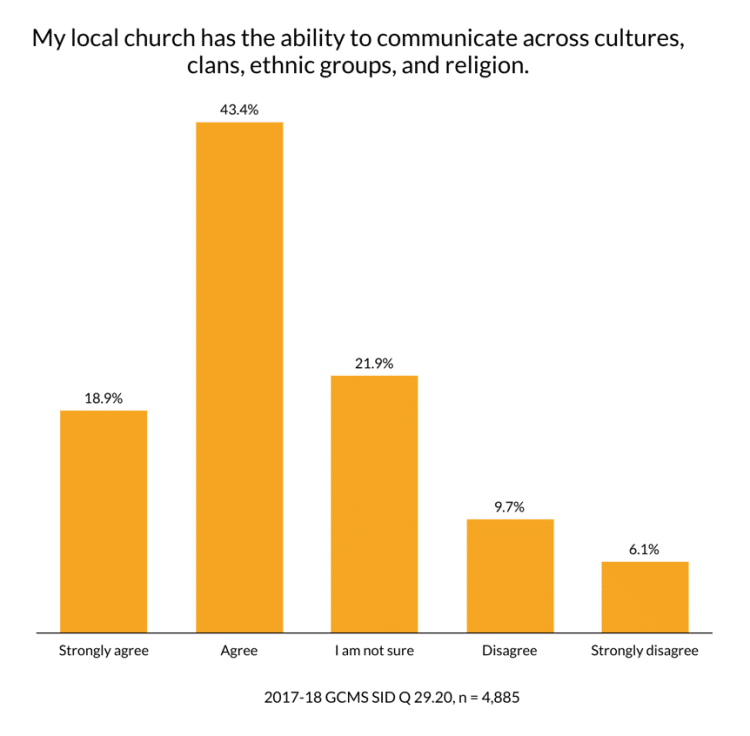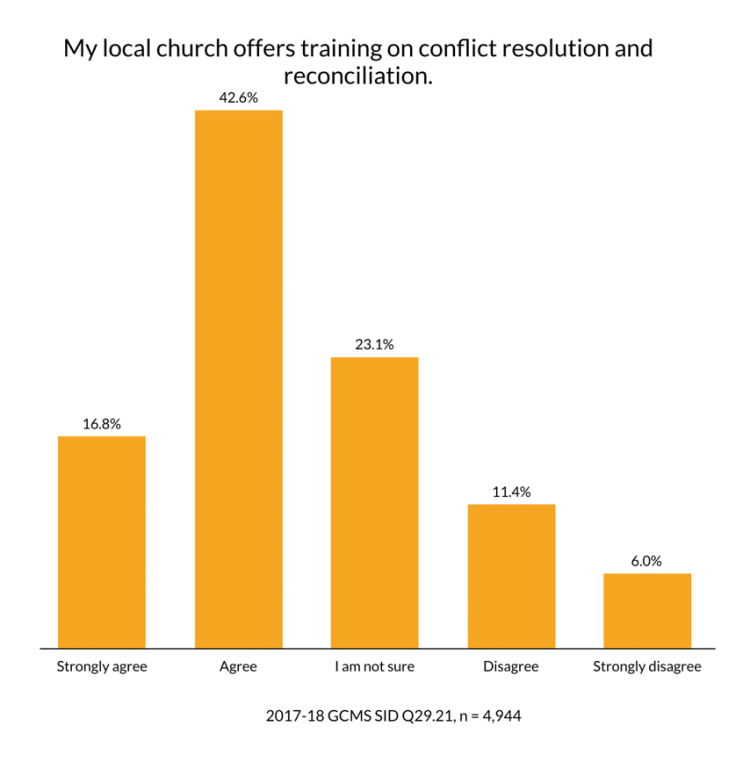“Forbearing one another, and forgiving one another, if any man have a quarrel against any: even as Christ forgave you, so also do ye.” – Colossians 3:13 (KJV)
Throughout the Bible, we are told time and time again about the importance of conflict resolution and reconciliation (Lev 19:18; Prov 16:7; Matt 5:9; 18:15-17; Luke 17:3, 4; Rom 12:17-21; and Eph 4:26, just to name a few). Yet because of our sinful human nature, conflict can easily cause separation in not only our families and friendships but in the church, as well.
We see that this is especially true in parts of the world that have historically experienced more upheaval and unrest than others. When we consider the region encompassed by the Southern Africa-Indian Ocean Division (SID), we find an area of the world that has been fraught with upheaval through the years. We specifically think of apartheid and the racial segregation that existed in South Africa and Namibia until as recently as the early 1990s. We think of the current humanitarian crisis in Angola—the result of prolonged years of war; we think of the political unrest that has plagued Zimbabwe throughout the 2010s, not to mention human rights issues and natural disasters experienced by nearly all SID countries at one point or another. While the SID covers a tumultuous area of the world, it is the newest Division of the Seventh-day Adventist Church, and one thing is clear: this is an area of the world where the good news of the gospel—and the peace that only Jesus can bring—is desperately needed.
Division Information
The 2017-18 Global Church Member Survey (2017-18 GCMS), conducted on behalf of the General Conference Office of Archives, Statistics, and Research, collected data from the thirteen World Divisions of the Adventist Church. Data was collected from the SID by Professor Elizabeth Role and her team. A total of 5,488 church members in 11 Unions participated in the survey. Their ages ranged from 15 years or younger to 80 years or older, and all levels of education from primary/elementary to professional/graduate school were represented. Interestingly, 16% of the respondents reported having some form of disability.
Cross-cultural Communication
As part of the 2017-18 GCMS, members in the SID were asked to respond to this statement: “My local church has the ability to communicate across cultures, clans, ethnic groups, and religion.” Approximately three out of five (62%) respondents agreed with this statement to one degree or another, while another 22% admitted that they were unsure. Unfortunately, 16% of respondents disagreed that their local church effectively employed cross-cultural communication. Inasmuch as racial issues have been a historical issue in the SID, it comes as no surprise that the Church struggles to overcome years of ingrained prejudice and ethnocentrism. However, we know that the gospel is for all people at all times in all places. Thus, despite the SID’s past, the Division must work to communicate effectively and, ultimately, unite “all nations, tribes, peoples, and tongues” (Rev 7:9, NKJV).

Conflict Resolution Training
Members in the SID were also asked if their local church offered training on conflict resolution and reconciliation. Approximately three out of five (59%) respondents agreed to one degree or another that their church offered such training. However, nearly a quarter (23%) were unsure, and 17% disagreed that such training was available at their local church. Again, this should serve as a call to action for leadership in the SID. The Church must seek to teach skills (i.e., confliction resolution and reconciliation) that members would not learn otherwise—even if they go against the culture or “norm.”

Sin causes wounds that only Christ can heal. The deeper the wounds, the greater the need for His healing touch. Although the agreement on both of these questions in the SID is higher compared with the total sample, there is still a concern that some local congregations in this division do not focus on these issues. They might be busy with no less important things. However, if 38%-40% of the survey respondents were unsure or disagreed that their churches successfully communicate through cultural or ethnic barriers or offer training on conflict resolution, this should be addressed. It would be interesting to compare these results with a future survey. The Adventist Church must strive to bring peace, healing, and reconciliation to all people, including in parts of the world such as the SID.
To learn more about the Southern Africa-Indian Ocean Division, click here: https://sidadventist.org
For other interesting research findings from the 2017-18 Global Church Member Survey regarding this Division, please see the SID 2017-18 GCMS Report.
To learn more about the total sample of the 2017-18 GCMS please see the Meta-Analysis Report.
Created in collaboration with the Institute of Church Ministry.
Published by ASTR on 8-18-2021.

